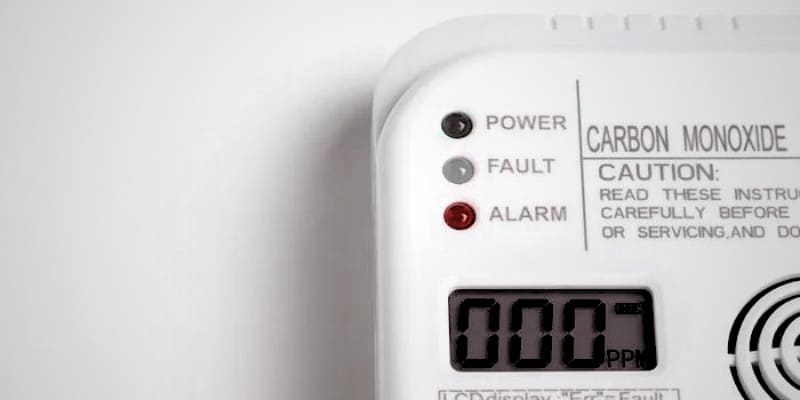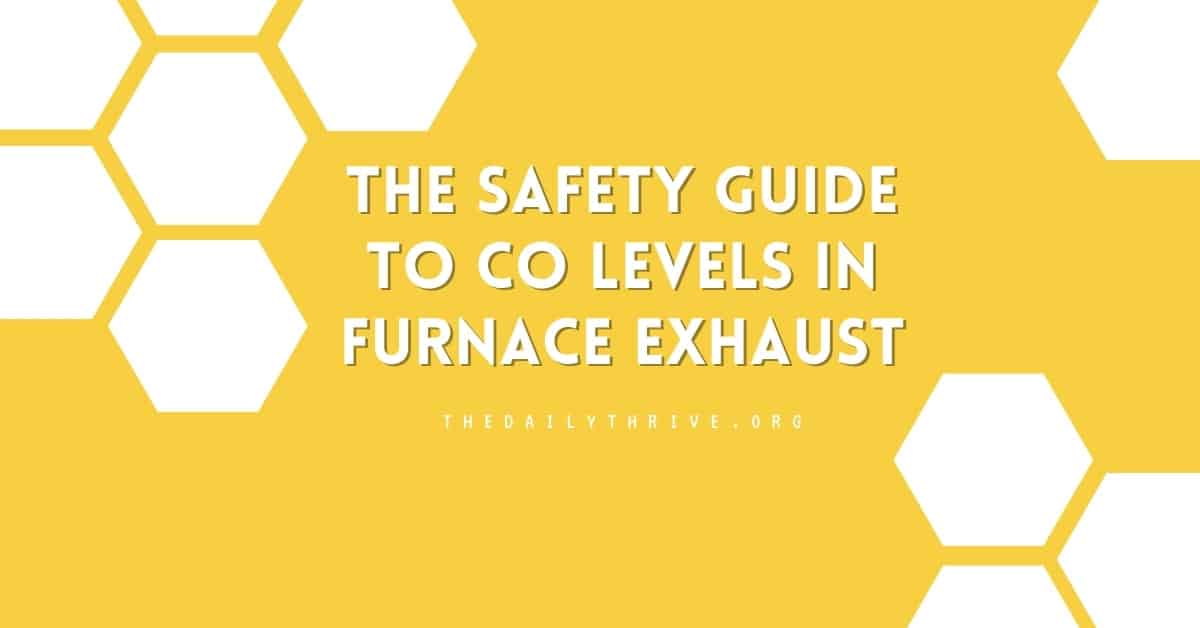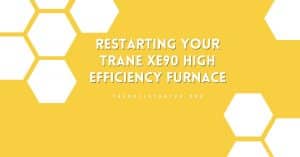If you’re like me, always curious and cautious about every little aspect of your sweet home, especially when it comes to things that have health implications, then stick around. Today, we’re delving deep into something homeowners often overlook: the normal carbon monoxide (CO) levels in furnace exhaust. It’s a critical topic because our health and lives could depend on it!
So, join me as we embark on a journey to understand the nuances of CO levels in furnace exhaust because our safety might hinge on this knowledge! I aim to shed light on our tested methods for evaluating carbon monoxide emissions from furnaces and provide you with some unwavering guidelines that I’ve come to trust wholeheartedly.
Carbon Monoxide (CO)
Now, let’s start from the beginning. What the heck is carbon monoxide, and why should you care?
Carbon monoxide (CO) is a colorless, odorless gas produced when you burn fuels like natural gas, which most home furnaces do. The tricky part? You won’t even notice it’s there until it’s potentially too late. This stealthy characteristic makes CO a silent threat that can cause health issues or, worse, fatal accidents if left unchecked.
Now, in an ideal scenario—imagine a perfect world where your furnace achieves what’s known as stoichiometric or theoretical combustion—all the fuel would burn, producing water vapor and carbon dioxide, with no carbon monoxide in sight. It sounds splendid, but let’s be real; this “perfect combustion” doesn’t happen in our everyday, real-world scenarios. There’s always that bit of CO produced because, well, no regular furnace operation is 100% efficient when it comes to burning fuel.
Here’s the deal: if your furnace is churning out excessive CO, it’s a double whammy. First, you’re not getting bang for your buck because not all the fuel is used to heat your home, which is a sheer waste. More importantly, high CO levels spell serious trouble for everyone’s safety.
Measuring CO Levels
Things get even more complex when we talk about measuring CO levels. You see, the acceptable maximum of CO is 400 parts per million (ppm), but here’s the kicker: this measurement has to be air-free.
Why does that matter? Because the amount of air mixed with the exhaust gases can seriously skew your CO readings. For instance, if you’re measuring CO in a power-vented water heater, a regular CO detector could give you a falsely reassuring number. These systems push a large air volume into the exhaust, diluting the gas concentration.
However, we pros don’t take chances. We use high-grade combustion analyzers that calculate CO concentration minus the air—giving us the air-free reading. This number is crucial because it reflects the real picture of how much CO your appliance is churning out, undiluted by the air in the mix. And guess what? This air-free CO reading will always be higher than what you’d get from a standard CO detector.
Normal CO Levels in Furnace Exhaust
Furnaces are designed to keep CO levels in check. So, what’s “normal” then?
As mentioned earlier, the maximum allowable CO in a vent is 400 ppm air-free. If the CO level exceeds this number, it’s essential to alert the homeowner immediately. Depending on the circumstances, turning off the equipment may be the right action, especially if the reading is significantly high. There are certain scenarios, such as during a harsh winter in a vacant house, where turning off the heating might not be feasible.
However, one might wonder, what about CO levels lower than the maximum?
For instance, is 300 ppm of CO in the vent considered safe? While the national fuel gas codes might suggest that it’s acceptable, the widely accepted standard in the industry is that CO levels should remain below 100 parts per million.
Most HVAC contractors and experts I’ve engaged with echo this sentiment. Although it might not be a clear violation of the code to have CO levels above 100 ppm, it usually indicates that the appliance isn’t burning efficiently. There’s often a tweak or fix that can be implemented to optimize it.
Furthermore, this threshold of 100 ppm isn’t just a number thrown around in the industry. Local gas companies have been utilizing this metric for years when assessing furnaces. Equipment producing CO levels above 105 ppm will typically get a yellow tag. In contrast, anything above 250 ppm is considered serious enough to warrant a red tag.
How much Carbon Monoxide does a Furnace Produce?
The production of carbon monoxide (CO) in a furnace is influenced by its efficiency, maintenance status, and operational integrity. Modern high-efficiency furnaces are crafted to reduce CO emissions due to their superior combustion processes. Proper and consistent maintenance—like cleaning burners, heat exchangers, flue pipe, and vents—can further curb CO production by preventing factors that lead to incomplete combustion.
However, even well-maintained furnaces can emit CO if there are combustion issues, which can arise from dirty burners, inadequate combustion air, or flue problems. The national fuel gas code sets a maximum allowable CO level at 400 parts per million (ppm) in furnace exhaust when air-free measured. Still, many professionals aim for below 100 ppm as an efficiency benchmark.
Telltale signs of increased CO production include excessive sooting and yellow flames in burners. Despite design safeguards, it’s paramount to have CO detectors in homes to ensure safety. To sum it up, modern furnaces aim to limit CO emissions, but maintenance and safety precautions, like CO detectors, remain essential.
When Should You Check for CO Levels on the Furnace?
Wondering how long you should let a furnace operate before checking its carbon monoxide (CO) levels? Some say fifteen minutes, others five. However, the most common guidance is to monitor until the flue’s temperature stabilizes.
Essentially, this means waiting until there’s no more temperature increase in the flue. From my experience, this typically takes around 5 minutes.
How Far Should Carbon Monoxide Detector Be from Furnace?
It’s best to install the CO detector at least 15 feet away from the furnace or other fuel-burning appliances to avoid false alarms.

Though CO is roughly the same weight as air, placing detectors on or near the ceiling is recommended since warm air rises. For homes with multiple floors, consider placing a CO detector on each level, particularly near sleeping areas, to ensure timely alerts. Lastly, avoid putting detectors near windows or doors to prevent drafts from affecting the readings.
By understanding these levels and monitoring your appliances regularly, you can ensure the safety of your household while also optimizing the performance of your equipment.
Final Thought
This nuanced information about CO levels is more than a technicality; it’s about safety. Furnaces can backdraft, which means exhaust gases might swoop back into your living space instead of heading outside. Add to that potential leaks or a cracked heat exchanger, and you’ve got CO mingling in the air you breathe.
So, when we talk about normal CO levels, we’re balancing between efficiency and safety. Sure, some CO production is “normal,” but the higher it gets, the closer you are to a potential hazard. That’s why professionals armed with the right tools need to check these levels regularly, ensuring your furnace isn’t just heating your home efficiently but safely.
Preventing CO leaks is just as crucial. Ensure you schedule regular furnace inspections. Pros will check if everything’s in tip-top shape, including the heat exchanger, vents, and chimney.
Monitoring the CO levels in your furnace exhaust is not something to sleep on. It’s about keeping your haven safe and your loved ones healthy. Stay vigilant, maintain your furnace, and you’re all set for a cozy, worry-free home environment.






